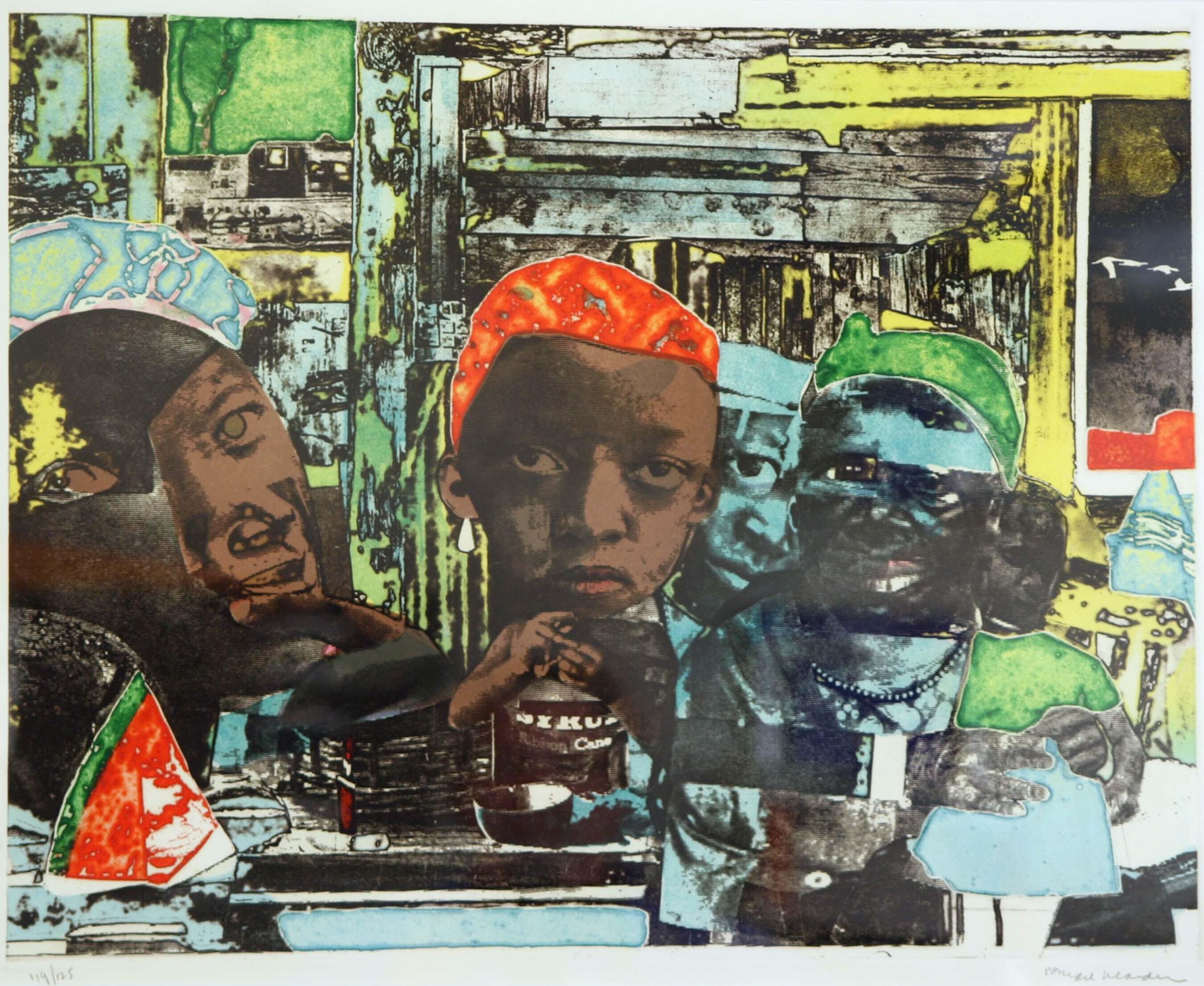Label
In The Train, Bearden has cut and pasted images of women and of African sculpture which he reworks into black faces. Wide-eyed they peer out the viewers, but it is not clear if they are observers of a train moving through town or if they are travelers themselves. The train of the print's title is a small detail that invokes larger issues of migration and segregation. Trains held great meaning for Bearden. He had a nomadic childhood and lived at various times with his parents and grandparents in Harlem, Pittsburgh, and North Carolina. According to Bearden, "I use the train as a symbol of the other civilization--the white civilization and its encroachment upon the lives of blacks."Label
Gallery guide from 2014.Art for Social Change:
The Train depicts at least three generations of African American women crowded together in a weather-beaten shack. Outside the left rear window is a passing train. Trains held great meaning for Bearden. Born in Charlotte, NC, he had a nomadic childhood during which he lived at various times in Harlem, Pittsburgh and North Carolina with his parents and grandparents. According to Bearden, “I use the train as a symbol of the other civilization—the white civilization and its encroachment upon the lives of blacks.” The Bearden family’s moves were part of the Great Migration that brought millions of Southern blacks North in search of jobs and greater personal freedom. But, as Bearden implies, this movement was necessitated by circumstances created by whites. The fragmentation of the women’s forms and their shifting placement suggest their repeated dislocation. They look out at the viewer. Are they asking, “What next?”Label
Label from 2014.Art for Social Change:
In The Train the face of the figure on the left is mask-like, resembling in its angularity and abstraction the style of some African art. Compare it, for example, to the Asante fertility doll also in this exhibition. Bearden and many other black Americans were greatly inspired by Africa and saw it as their ancestral heritage denied to them under slavery.
The four women in the image stare out at you, the viewer, but why are you there and what do the women think about you? Three generations are crowed together in a ramshackle shack of a type in which many blacks were forced to live. Their home is near the tracks, as a train is visible in the window at the upper left. Trains held great meaning for Bearden. He once said, “I use the train as a symbol of the other civilization—the white civilization and its encroachment upon the lives of blacks. The train was always something that could take you away and could also bring you back to where you were. And in little towns it’s the black people who live near trains.”
